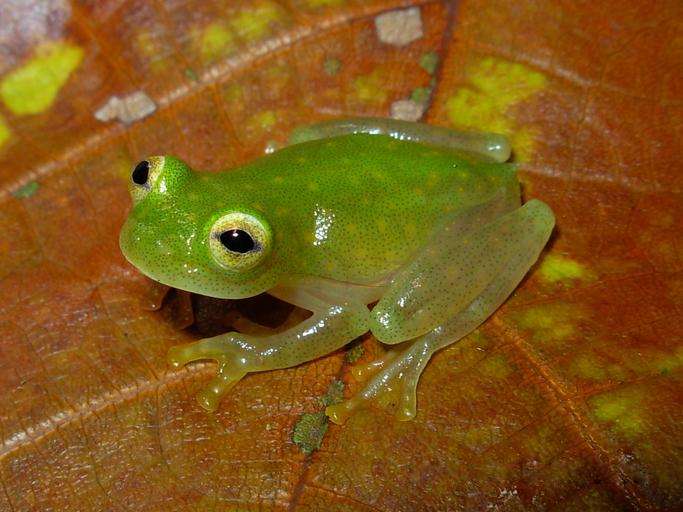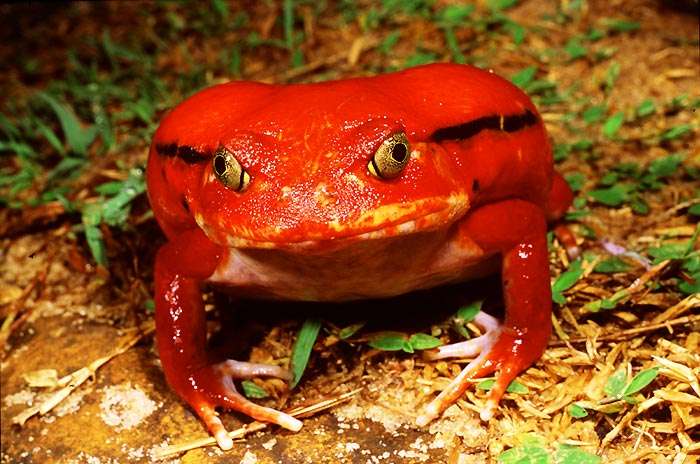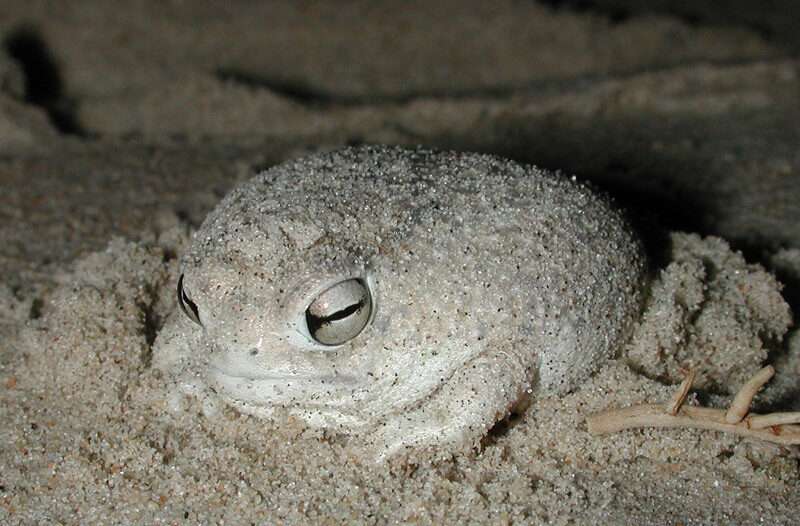
The fleischmann’s glass frog, often known as the northern glass frog, is a species of frog in the Centrolenidae family. From southern Mexico to Ecuador, it can be found across the tropical Americas. These frogs can be found in Mexico, Belize, Costa Rica, El Salvador, Guatemala, Honduras, Nicaragua, Panama, Colombia, and Ecuador, to name a few. Note that the distribution of this species and its relatives varies according to the source, and they are frequently confused with one another. This frog typically has translucent skin covering its tummy, faint yellowish patches, yellow fingertips, and green skin.
Habitat
Mexico, Central America, and South America: Northern glass frogs can be found in wet woods between sea level and over 1,600 meters along clear, running, mostly stony streams from southern Mexico through much of Central America to northern South America. In humid montane forests, this frog can be found.
Appearance
Due to their completely transparent underbellies, glass frogs have an intriguing appearance. We can see their inside organs and even their heart beating because of their transparency! They have green bones and a light green tint. They occasionally have light yellow or white markings on them. According to scientists, having green bones is an adaptive trait that helps animals better blend in with their surroundings. Northern glass frogs are quite small, growing up to a length of 2.5 cm (1 in.).

Diet
Like other species, glass frogs mostly consume microscopic invertebrates, spiders, and other tiny insects in their meals.
Reproduction
Most of the time, from May to October, is the rainy season, when northern glass frogs reproduce. The males defend the egg clutches, which are placed on the undersides of leaves where they adhere. Recently deposited eggs have pale green yolks, and growing embryos are yellow. Although mostly clear, the jelly surrounding the eggs has a distinct green tint. Depending on where you are and what time of year it is, the average egg size ranges from 18 to 30. It has been estimated that 80% of the clutches are destroyed before hatching due to extensive predation on the eggs by a variety of vertebrates (such as the Cat-eyed snake) and invertebrates (such as the eggs of the Drosophilid fly).
This species’ males exhibit a peculiar type of behaviour. He watches after the clutch of eggs that have been laid, rotating on top of them as he urinates bladder water over them to prevent drying out. Some of the males who are defending the eggs will consume any eggs that have been contaminated by parasites, preventing disease from spreading throughout the clutch. If all goes according to plan, their eggs should hatch 10 to 15 days after deposition, at which point the tadpoles will fall into the water and hide among submerged debris or loose bottom gravel. Tadpoles grow slowly, with metamorphosis taking anywhere between one and two years.
Keeping as Pet
Small insects must be given to glass frogs because they are so small. They are also incredibly adorable and can perch on the palms of your hands. They are perfect as pets because of all of this. However, there are also drawbacks. As an arboreal amphibian native to tropical rainforests, the glass frog requires a suitable environment in which to live in captivity. Some glass frog species are expensive because they are thought to be endangered. However, even if you are unable to maintain glass frogs as pets, they are fascinating animals that must be rescued from extinction.
Table





